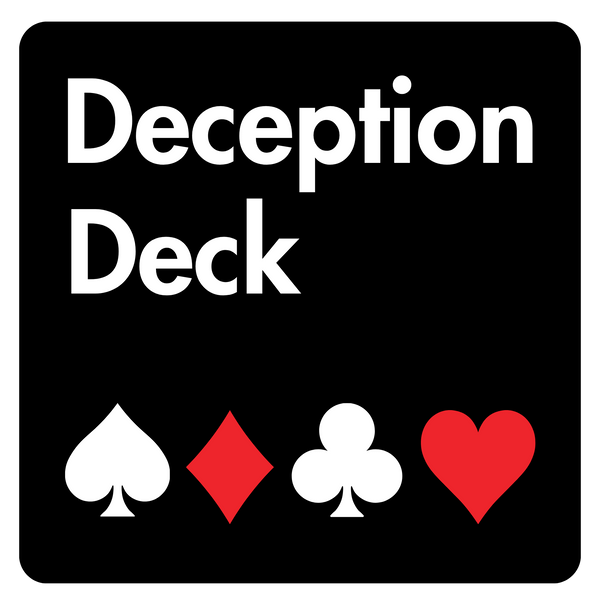Frequently Asked Questions
1. What is the significance of understanding deceptive behavior?
2. What are some common signs of deceptive behavior?
3. How can cultural differences impact deception detection?
4. What tools can assist in deception detection?
5. How can one improve their skills in detecting deception?
Understanding deceptive behavior can significantly enhance our interpersonal relationships and communications. In today's world, where integrity matters, being aware of the signs of deception not only empowers individuals but also aids in fostering healthier interactions. This blog dives into the common signs of deceptive behavior and underscores the importance of deception detection in various environments.
Why Is Understanding Deceptive Behavior Important?
Recognizing deception detection can have profound implications in personal and professional settings. Whether you're dealing with a colleague at work, a friend, or even in your online interactions, spotting deceptive behavior can save you from unfavorable outcomes. Here are some reasons why understanding this behavior is crucial:
- Builds Trust: Knowing the signs of deception helps you make informed decisions about whom to trust.
- Enhances Communication: Understanding deceptive signals allows for clearer communication.
- Improves Decision-Making: Making choices based on facts rather than falsehood improves overall judgment.
Common Signs of Deceptive Behavior
Now that we understand the importance of recognizing deceptive behavior, let’s dive deeper into some common signs you should be aware of. While no single cue is definitive proof of lying, a combination of several indicators can often signal that something is amiss. Here are the primary signs to watch for:
Inconsistent Stories
When someone tells a story with multiple inconsistencies, it's often a red flag. A person's memory of an event usually remains consistent, so frequent changes or contradictions can highlight deception. Pay close attention to:
- Chronological discrepancies
- Varied details in different retellings
- Unusual gaps in the narrative
Body Language Clues
Body language can betray our intentions. Here are signs that might indicate deception detection through non-verbal cues:
- Avoiding Eye Contact: Many individuals find it difficult to maintain eye contact when lying.
- Closed Posture: Crossing arms or legs can indicate defensiveness or avoidance.
- Fidgeting: Excessive moving or adjustments may signal discomfort.
Vocal Changes
Changes in vocal delivery can also signal deception. When assessing this, listen for:
- Article hesitation (i.e., 'um', 'uh')
- Increased pitch or speed of speech
- Unusual pauses during delivery
Microexpressions: The Key to Truth?
Microexpressions are fleeting facial expressions that betray true emotions. They last a mere fraction of a second but can be crucial for deception detection. Here’s how to spot them:
- Surprise: A brief look of shock can reveal when they're caught off-guard by a question.
- Fear: Instantaneous signs of fear can arise when the truth is about to be unveiled.
- Disgust: Expressing disgust, even subtly, can signal discomfort with what’s being discussed.
Verbal Signposts
The way someone communicates can also reveal their authenticity. Here are verbal indicators to watch out for:
Overly Detailed Explanations
Sometimes, individuals who are being deceptive provide extensive details to solidify their accounts. While context is valuable, excessive embellishment may point towards an attempt to convince others of a falsehood.
Deflecting Questions
When pressed for information, deceptive individuals may deflect questions or ask for clarification to buy themselves time. This evasive behavior can often signify an absence of truth.
The Impact of Cultural Differences on Deception
Understanding that cultural backgrounds can affect how deception is perceived is essential. What might be considered deceptive in one culture could be viewed as acceptable in another. Here’s how cultural differences impact behavior:
- Non-Verbal Signals: Different cultures have varying interpretations of body language cues.
- Communication Styles: Some cultures may emphasize indirect communication, leading to misunderstandings.
- Perceptions of Truth: In some cultures, saving face may be more important than outright honesty.
Improving Your Skills in Deception Detection
Mastering the skill of deception detection isn't just instinctual; it can be learned and improved over time. Here are some tips to hone your skills:
- Practice Observation: Regularly observe body language and vocal patterns in various settings.
- Ask Open-Ended Questions: This encourages less scripted responses.
- Trust Your Instincts: If something seems off, don’t ignore that gut feeling.
Tools and Techniques for Detecting Deception
In today’s technological age, various tools can aid in deception detection. While these should not replace human judgment, they can be useful additional resources:
- Polygraph Tests: Often used in professional settings, polygraphs measure physiological responses.
- Voice Stress Analysis: Voice analysis software can detect stress and anxiety in vocal patterns.
- Video Analysis Tools: Some technologies can analyze facial features and micro-expressions.
Know When to Trust Your Instincts
Ultimately, while the signs of deceptive behavior can guide you, trusting your instincts is equally important. If you feel something isn’t quite right, take note and investigate further. Effective deception detection combines both analytical observation and intuition.
Building a Foundation of Trust
Understanding the common signs of deceptive behavior can empower individuals to navigate complex interactions with greater confidence. By mastering the art of deception detection, you're not just searching for lies; you're also building a more authentic and trusting environment around you. Remember, it’s about enhancing communication, fostering relationships, and making decisions grounded in truth.
Stay vigilant, trust your instincts, and keep these signs in mind as you engage with those around you. Remember, awareness is your best ally in maintaining relationships that thrive on honesty and transparency!


